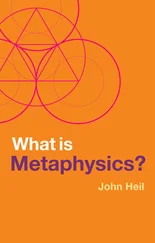The urn model with creation and destruction has two distinct forms of behavior. If pairs of balls are created and destroyed at the same rate in both urns, then the behavior of the system is similar to the Ehrenfest urn model: Both urns end up with roughly the same number of balls, which fluctuates up and down over time in stable equilibrium. By contrast, if the urn with more balls is allowed to create pairs at a higher rate than the urn with fewer balls, then the behavior is unstable: The urn with more balls will acquire more and more balls, both black and white. If destruction also occurs at a higher rate in the urn with more balls, then the number of balls in that urn will explode and then collapse. In physical terms, this unstable behavior comes about because allowing the “wealthier” urn to create balls at a higher rate gives the overall system negative specific heat, so that stable equilibrium is impossible.
In financial terms, creating a pair of balls is analogous to creating debt, and destroying a pair of balls is analogous to retiring debt. The urn model implies that if wealthier institutions, with more balls, can create debt at a higher rate than less wealthy institutions, then the flows of assets and debt become unstable. That is, if wealthier institutions have higher leverage, then economic equilibrium goes unstable. Lehman Brothers was leveraged at around 30 to 1 at the time of its collapse: It had been able to borrow $30 for each dollar it actually possessed. The urn model’s criteria for instability were met. The signature of unstable equilibrium is that ordinary transactions, such as banks lending money, no longer lead to the best allocation of resources or something close: Instead, they lead to the worst allocation of resources! Sound familiar?
So, what to worry about? Don’t worry about the end of the universe or the Earth falling into a galactic black hole. But if banks leverage to the hilt again, then you should worry about hearing another big sucking sound.
THE OPINIONS OF SEARCH ENGINES
W. DANIEL HILLIS
Physicist, computer scientist, co-chairman of Applied Minds, LLC; founder, Metaweb Technologies; author, The Pattern on the Stone
Last year, Google made a fundamental change in the way it searches. Previously a search for, say, “Museums of New York” would return Web pages with sequences of letters that matched your search terms, like M-U-S-E-U-M. Now, besides the traditional keyword search, Google also performs a “semantic search,” using a database of knowledge about the world. In this case, it will look for entities that it knows to be museums that are located within the geographic region that is named New York. To do this, the computers performing the search must have some notion of what a museum is, what New York is, and how they are related. The computers must represent this knowledge and use it to make a judgment.
The search engine’s judgments are based on knowledge of specific entities: places, organizations, songs, products, historical events, even individual people. Sometimes these entities are displayed to the right of the results, which combine the findings from both methods of search. Google currently knows about hundreds of millions of specific entities. For comparison, the largest human-readable reference source, Wikipedia, has fewer than 10 million entries. This is an early example of semantic search. Eventually every major search engine will use similar methods. Semantics will displace the traditional keywords as the primary method of search.
A problem becomes apparent if we change the example from “Museums of New York” to “Provinces of China.” Is Taiwan such a province? This is a controversial question. With semantic search, either the computer or the curator of the knowledge will have to make a decision. Editors of published content have long made such judgments; now the search engine makes these judgments in selecting its results. With semantic search, these decisions are based not on statistics but on a model of the world.
What about a search for “Dictators of the World”? Here the results, which include a list of famous dictators, are not just the judgment of whether a particular person is a dictator but also an implied judgment, in the collection of individual examples, of the very concept of “dictator.” By building knowledge of concepts like “dictator” into our shared means of discovering information, we are implicitly accepting a set of assumptions.
Search engines have long been judges of what is important; now they are also arbiters of the truth. Different search engines, or different collections of knowledge, may evolve to serve various different constituencies—one for mainland China, another for Taiwan; one for the liberals, another for the conservatives. Or, to put it more optimistically, search engines may evolve new ways to introduce us to unfamiliar points of view, challenging us with new perspectives. Either way, their invisible judgments will frame our awareness.
In the past, meaning was only in the minds of humans. Now it is also in the minds of tools that bring us information. From now on, search engines will have an editorial point of view and search results will reflect that viewpoint. We can no longer ignore the assumptions behind the results.
TECHNOLOGY-GENERATED FASCISM
DAVID BODANIS
Writer; futurist; author, Passionate Minds: Emilie du Châtelet, Voltaire, and the Great Love Affair of the Enlightenment
I’m worried that our technology is helping to bring the long postwar consensus against fascism to an end. Greece was once the cradle of democracy, yet on live television there recently, a leader of the Golden Dawn fascist movement started beating a female MP who disagreed with his views—smashing her on one side of the head, then the other—and his poll ratings went up, not down.
The problem is that our latest technology works best with no one in control. Silicon Valley trumps anything that more regulated economies can produce. But when the results are applied in banking, or management, the consequence for those in the middle and bottom of society often is chaos: jobs coming and going, seemingly at random.
Because of what fascism led to in the past, it’s easy to forget how attractive it can be for most citizens in troubled times. With a good enemy to hate, atomized individuals get a warm sense of unity. And although some gentle souls like to imagine, frowningly, that only an ill-educated minority will ever enjoy physical violence, that’s not at all the case. Schoolchildren almost everywhere enjoy seeing a weaker child being tormented. Fears about our own weakness disappear when an enemy is mocked and punished—a reflex that radio shock jocks across America skillfully manipulate.
This cry of the dispossessed—this desire for restoring order, this noble punishment of those who “dare” to undermine us—will get a particular boost from medical technology. Medicine is getting better, but it’s also getting more expensive. Extrapolate those trends.
There’s every reason to think that modifications of Botox will be longer-lasting and avoid unmovable foreheads—but what if they cost $4,000 a shot? The differences in physique noticeable even now between the wealthy and the poor at many shopping malls will only be exacerbated.
Gene therapy is likely to take that further, quite plausibly slowing aging by decades—but what if that costs several hundred thousand dollars? Many people in our cities’ wealthiest neighborhoods would start using it. It’s not hard to imagine popular leaders, with no memory of World War II, inspiring those outside the select high-income domains, those who are mocked beyond endurance by the existence of these near-immortals in their midst, to pursue this all-too-human response to injustice.
Читать дальше












